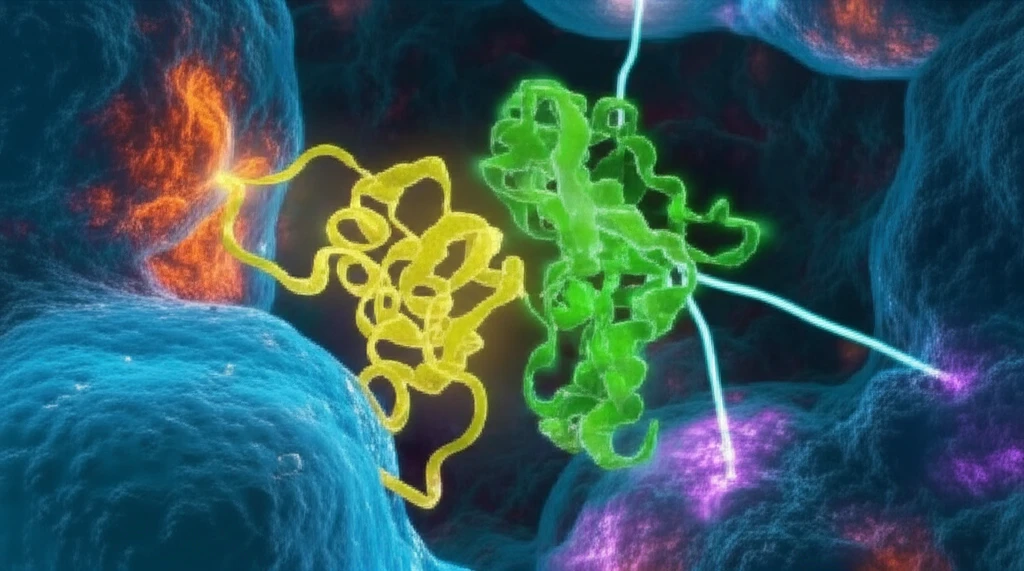
Decoding Protein Interactions: How Flexibility and Dynamics Shape Cellular Processes
"Unlocking the Secrets of Protein Binding: A Look into Intrinsically Disordered Proteins and Their Role in Cellular Signaling"
Proteins are the workhorses of our cells, and their interactions dictate nearly every biological process. Understanding how proteins bind and interact with each other is essential for unraveling the complexities of cellular function and developing new therapeutic strategies.
Intrinsically disordered proteins (IDPs) are a unique class of proteins that lack a fixed three-dimensional structure. Instead, they exist as dynamic ensembles of conformations, allowing them to interact with multiple partners and participate in a wide range of cellular processes. Their flexibility makes them difficult to study, but also crucial for cellular regulation.
This article delves into recent research exploring the conformational changes and binding mechanisms of IDPs, particularly focusing on their interactions with other proteins and the implications for cell signaling. We'll explore how techniques like molecular dynamics simulations are helping scientists understand these dynamic interactions and how they impact cellular processes.
The Dynamic Dance: How IDPs Bind and Interact

Traditional models of protein binding often assume a 'lock-and-key' mechanism, where a rigid protein fits perfectly into a binding pocket on another protein. However, IDPs challenge this view. Their inherent flexibility allows them to adapt their shape upon binding, enabling them to interact with multiple partners and regulate diverse cellular functions.
- Conformational Changes: IDPs undergo significant conformational changes upon binding, adapting their shape to optimize interactions with their binding partners.
- Flexibility is Key: The flexibility of IDPs allows them to interact with multiple partners and regulate diverse cellular functions.
- Molecular Dynamics Simulations: These simulations provide a detailed view of the conformational changes that occur during IDP binding.
- Specific Residues Matter: Specific amino acid residues and structural motifs play critical roles in mediating IDP interactions.
The Future of IDP Research: Implications and Applications
Understanding the intricate world of IDP interactions is crucial for advancing our knowledge of cellular processes and developing new therapeutic strategies. By combining experimental techniques with computational modeling, researchers are uncovering the secrets of these dynamic proteins and their role in health and disease.
The ability of IDPs to link alternative splicing and post-translational modifications to complex cell signaling pathways highlights their central role in cellular regulation. Further research in this area could lead to the development of targeted therapies that modulate IDP function to treat a variety of diseases, including cancer and neurological disorders.
As we continue to unravel the complexities of IDP interactions, we can expect to see new breakthroughs in our understanding of cellular function and the development of innovative therapeutic approaches. The future of IDP research is bright, promising new insights into the dynamic world of proteins and their role in shaping life as we know it.
